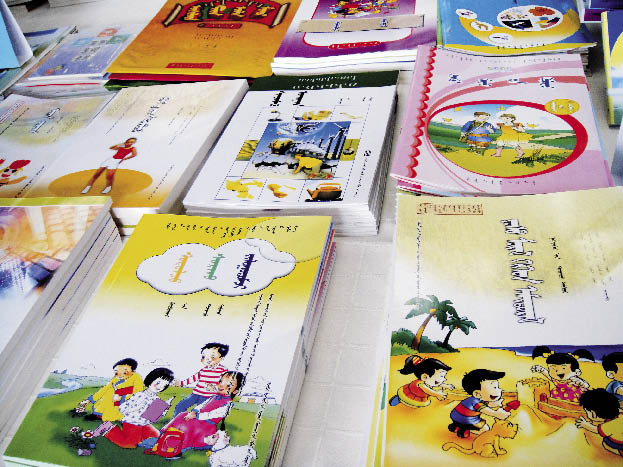|
Teaching with Great Pleasure
Pupils at the Second Mongolian Primary School in West Ujimqin Banner rush out of classroom upon hearing the bell ring at 5 pm. A delicious meal awaits them in the school’s dinning hall. Outside the school gate, Mergenma, who is waiting for her grandson, explains, “The children like this school because of its good facilities. What’s more, the government covers their tuition fees and provides healthy free meals for them.”
Just like other former herdspeople, Mergenma and her family lived a nomadic life on the grasslands. Following the birth of her grandson, she and her husband passed the herd onto their son and daughter-in-law and devoted themselves to the care of the baby. As the boy reached school age, the elderly couple left the grasslands and rented an apartment in the urban area of West Ujimqin so that the child could receive a better education.
In the past, schools were not accessible to nomadic children. Teachers would have to travel by horseback out to the yurts scattered across the grasslands to provide lessons to the local children. It became known as “school on horseback.”
In 2004, the regional government began to move such migrant schools in gatsaas and sums (villages and towns in Mongolian language) to banner (county) seats and convert them into boarding schools where students receive a nine-year compulsory education without paying any fees for tuition or accommodation. Some well-to-do areas provide an even longer period of free education, 15 years in the case of Xilin Gol League (prefecture) and 19 years in Ordos League. More and more nomadic and village children are attending schools in counties and cities.
Suyaltu came to teach mathematics at the Second Mongolian Primary School in West Ujimqin Banner in 2004. Compared with the village school where he used to work, Suyaltu believes that the school in the banner offers far better conditions to its students. “The spacious classrooms are clean and bright and the playground is well-equipped with a nice collection of sports facilities. And, we can now take advantage of more advanced equipment like computers and other multimedia facilities to aid our teaching.” Suyaltu feels that working in this school is a pleasure. On top of that, he has gained a better understanding of quality-oriented education, especially after he received his educational training last year in Shanghai. “Thanks to the school, I was able to visit Shanghai for the first time. The training enabled me to improve my teaching methods, and keep me updated with the latest developments in quality-oriented education,” Suyaltu says.
Stress on Psychological Education
According to Yang Huiliang, replacing the grassland schools on horseback with the structured Mongolian-taught schools in the urban areas is not only easier on nomadic children, it ensures a better quality of education.
Teachers have increased responsibility when taking care of boarders. “My students are all around the same age as my son, so I regard them as my own children,” said Ulaan, a teacher at the Tongliao Mongolian Middle School. “Apart from knowledge, teenagers also need psychological care, especially when they are away from parents.” Ulaan and her colleagues often make themselves available to talk heart to heart with the students whenever they are frustrated or feel confused. The campus is open to parents on specific visiting days and provides them with free accommodation.
The school also attaches great importance to the students’ moral education. Regulations for etiquette written in Mongolian can be found in the dormitory. Students are encouraged to be modest, respect the elderly and care for the young.
Nowadays, a wider range of teaching materials is available for Mongolians. Each year, over 200 textbook titles and reference books are published in Inner Mongolia Autonomous Region. Many books used throughout the nation’s primary and middle schools published by the People’s Education Press are translated into Mongolian. This is good news for Mongolian students who can now share the same learning resources as their counterparts across China.
 |
|
Textbooks used throughout the nation’s primary and middle schools have been translated into Mongolian.
Photos by Cheng Wenjun
|
| 